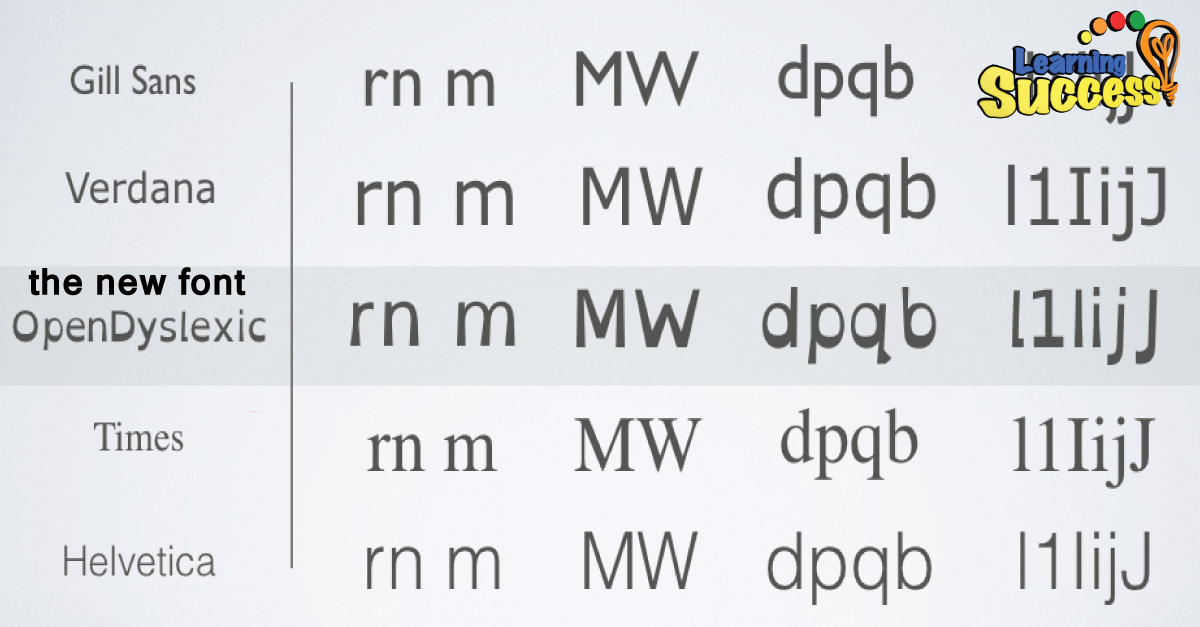
As a child, did you ever play the calculator game where you attempt to write words in the calculator, which either require be turned upside down or placed in front of a mirror to be read? For example, a “3” becomes “E” in a mirror's reflection, and a “4” becomes “h” when turned upside down. The number “1” always doubles as an “l,” and “0” is an easy “o.”
Sometimes I think reading and writing in “calculator language” can be a lot like reading and writing generally for some with dyslexia. It requires a lot more attention and mental concentration to make the most basic words.
Just think about all the mirrored letters like “b,” “d,” “p,” and “q.” Then there are the flips like “m” and “w” or the rotations “d” and “p.” Not to mention, letter run-ons such as “rn,” which looks a lot like “m.” That so many letters are so similar in appearance is a never-ending nightmare to many with dyslexia.

A myriad choices
Earlier this year we wrote about the new font, OpenDyslexic, which is an open source font designed to make reading easier for people with dyslexia.
But there is an older font designed for the same purpose: Dyslexie.
Though it is not an open source font like OpenDyslexic, it is free for home-users (schools and businesses pay a small fee) and worth looking at.
OpenDyslexic and Dyslexie websites are written in their respective fonts, so it may be worthwhile sitting down with your child at the computer and comparing the websites to see which (or if either) is good for your child.
Both fonts use a similar system of weighting letters to make it difficult for the mind to make accidental rotations and reversals and spacing to make each individual word stand out.
Rebecca Brink, in reviewing fonts for people with dyslexia, asserts that Dyslexie may be the best. She states, “OpenDyslexic is a little thick and Lexia Readable is a little choppy to apply as a standard font for a shared computer, whereas Dyslexie resembles standard fonts a little more. If the point is to help families supporting a family member who has dyslexia, Dyslexie would be the easiest for everyone to embrace in a web browser.”
One size fits all? Never
If neither font feels right for your child don't despair or try to force the matter. There is some conflict of opinion among the experts whether the fonts are actually effective. Some people may find the weighting distracting or be frustrated by how “different” the fonts are from the fonts they've grown used to.
What the evidence does seem to show, regardless of typeface chosen, is that background colors, font size, line length, and word size all seem to have a significant impact on the dyslexic student's reading speed. If using an e-reader, all of these factors may be able to be adjusted and experimented with.
More importantly, keep experimenting until your child feels comfortable with the result. Changing your font is a great (and free) starting point as you work to find the best accommodations that assist your child daily.
Key Takeaways:
In addition to accommodations, you'll also want to get a program started to develop the micro-skills that are weak. By building up these small skills you'll develop better reading skills in your child. The best way to do that is to get started on the Learning Success System today!
This article was originally published 12/26/15. It has been checked for relevance. Updated, and republished
“Is your child having difficulty with reading or other academics?” “Wondering if it’s dyslexia?” Use our free dyslexia test to get answers. Simply answer a few easy questions and find out now
You can get this analysis for free by filling out this simple form. This will help you get to the bottom of a learning difficulty and provide you with a solution. If you are ready to put this problem behind you click the button below and fill out the form.










